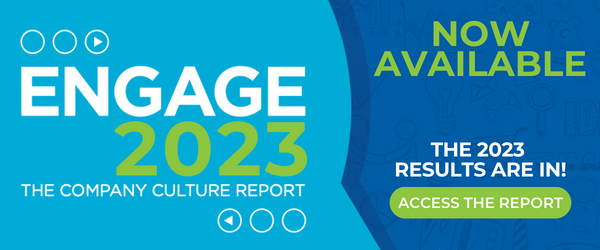
We’ve all heard the buzzword “Quiet Quitting,” and according to Google, searches for “how to quit a job” are higher than ever.
To put it simply, Quiet Quitting is quitting the idea of going above and beyond in your job. We’ve all been asking the question – why are employees doing this? We can’t just blame it on the TikTok bandwagon.
To answer the question of why we need to figure out where the motivation to “go above and beyond” first came from and what caused that motivation to disappear. Figuring that out takes some tricky detective work! The motivation to “go above and beyond” was likely different for each individual. After all, everyone is unique!
What we do know is that leaders set the tone within an organization. Workplace culture and employee engagement both start at the top. Preventing a workplace where Quiet Quitting continually trends upward is in the hands of leaders.
Here are some actions steps you can take right now to begin transforming the narrative from Quiet Quitting into employee engagement.
3 Ways to Transform Quiet Quitting Into Employee Engagement
1. Clarify Expectations
According to our Engage 2022 Report, only 67% of employees surveyed said they know what is expected of them in their job, and 10% of newer employees report they are not clear at all in their job expectations.
If you aren’t back in the office full-time, take a moment to think about how many times you informally had discussions with employees when everyone was in the office Monday through Friday. How does that compare to your discussions now? It’s fairly eye-opening when you realize the stark difference. Feedback is occurring much less frequently.
Open and honest two-way communication is key to clarifying expectations and providing feedback. Paint a clear picture of what success looks like for each person and commit to regularly discussing how they’re aligning with your expectations. Hybrid and remote environments encourage autonomy, but employees still need and crave the same amount of feedback they received prior to the pandemic.
Be specific in your feedback by identifying the behaviors you see. And remember, feedback isn’t just about constructive criticism. Feedback should primarily focus on the positive behaviors you see someone exhibit that has led to their success.
2. Provide Self-Development Opportunities
If we aren’t growing, where are we going?
Identify what your employees are most interested in. Assign and delegate work based on interests, talents, and strengths. Science proves that those involved in activities leveraging talents feel more fulfilled at the end of the work day. Not only that but quality and productivity increase as well.
As you identify what your employees are most interested in, provide them with opportunities to increase their knowledge and develop their skills. These opportunities can take on many forms. Someone may be a subject-matter expert and have the desire to share their expertise with the team. Others may be new to things that pique their interest and want to explore them further through workshops and webinars.
What’s the easiest way to find out the types of self-development opportunities your employees crave? Ask them!
3. Let Them Know You Care
Genuine interactions with your employees can go a long way. Incorporate the question, “How can I support you?” into your touch base meeting. Set aside time to truly ask them how they’re doing and let them know they’re important to you.
Many of us grew up understanding The Golden Rule - treat others as you want to be treated. Initially, that sounds like the right way to approach leadership. In reality, though, each person is an individual. How I want to be treated isn’t necessarily how you want to be treated.
Instead of incorporating The Golden Rule, let your employees know you care by implementing The Platinum Rule – treat others as they want to be treated. They will feel a stronger sense of understanding from you, and it will help you earn their trust. I recently heard a story of a manager who learned how each one of her Account Executives liked to be recognized. One AE didn’t enjoy recognition in front of her co-workers or one-on-one. Instead, she simply wanted her mom to know when she was successful.
Before long, this AE was exceeding budget, and her manager wanted to recognize her. The manager remembered what she’d learned and sent a bouquet of flowers to the AE’s mom with a handwritten note about her daughter’s success. The next day, the AE came into her manager’s office and said, “I’ve never had a manager who understands me as you do.” The small floral gesture was clearly very impactful and is a prime example of The Platinum Rule in action.
Quiet Quitting won’t just disappear or fade off into the distance. It will take purposeful actions from leadership to re-engage those who aren’t currently going above and beyond. It’s time to take the first step!











LEAVE A COMMENT